All that thought and knew about driving in the winter was wrong
Driving safety in winter: what you can’t learn in driving school.
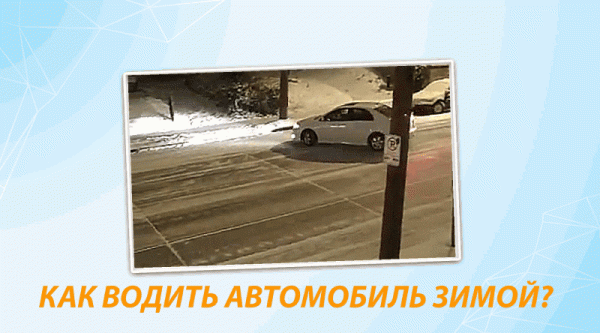
As said poet Ogden Nash in his poem, winter is the season of youth, when you’re trying to catch snowflakes on your tongue. Of course, snow days are fun for children, but for drivers of winter weather threat.
The problem is that we, in fact, is not taught in driving, winter safe driving. Moreover, many avtoinstruktor even hide from the potential drivers of the difference from summer driving to winter, silence, how to avoid and cope with drifts. No, of course, driving instruction in a driving school should not turn into defensive driving courses, but the students in the schools just have to give a definite minimum of knowledge about winter driving. Unfortunately, not all avtoinstruktor willing to share their experience.
Today, many of the teachers at the driving school some money. After all, most likely, many drivers-beginners fail your first exams. In this case, they will need to take any additional driving lessons or to seek connection in the SAI. Guess who they’ll ask about the acquaintance in the police? Well, of course, have instructor, which usually have friends in the traffic police. So we get not only the development of corruption in the issuance of rights, but also the personal interest of the instructor in the poor preparation of their students.
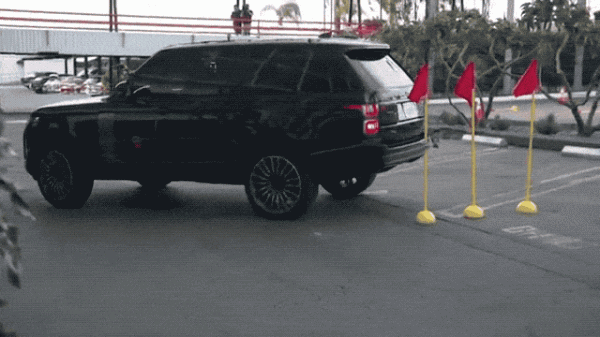
As a result, each year on the roads of Russia there are more drivers not only poorly trained to drive, and still almost do not know how to behave behind the wheel in the winter. Especially dangerous for any beginner the first two winters. According to statistics, in the first years of the newcomers and be responsible for the accident. Especially with the onset of winter.
But the problem with winter driving applies not only to novice drivers. Did you know that even drivers with experience still make mistakes behind the wheel when driving on slippery winter roads? But the fact is that either they were once properly taught to drive a car in winter conditions, either it no one had never explained how to drive in difficult weather conditions.
For example, you know what the most common cause of accidents in winter time? This failure to comply with speed limits, thereby increasing the time required to stop the vehicle (braking distance is extended). In this case, you need to know how to brake properly.
The snow is as slick as ice

Many people forget (or not know) that the snow on the road can be as dangerous as ice. The degree of traction when driving on snowy roads can change dramatically depending on temperature, said Alexey Dorokhov, research fellow of the research and engineering laboratory, Institute of applied ecology of the North.
According to him, the warm snow is more dangerous, because this snow tyres harder to get a good grip.
“As you increase the temperature of the snow surface becomes more slippery. The ambient air temperature in the winter is essential for a clutch car with a snowy road surface. For example, when the air temperature is -1 degree Celsius, compacted snow is five times more slippery than at -17 degrees.”
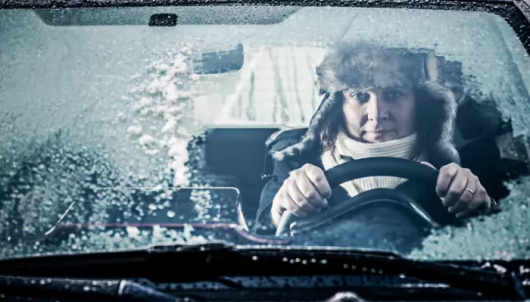
The words of the academic studies of Army research and engineering laboratory cold regions, Hanover, USA. The researchers say that when the tires begin to slide on snow at higher temperatures, they are more likely to begin to melt the snow which turns into water. The water in this case acts as a lubricant, reducing traction with the road surface.
Why when driving in the winter is important smooth movements
According to the researcher, Army research and engineering laboratory cold regions, Hanover, USA, O’neill, on dry pavement, the tires have so much grip that drivers can accelerate enough to press sharply on the brake pedal and make sudden maneuvers and sharp turns.

But everything changes on a slippery surface. Especially with the onset of winter, when traction becomes significantly lower. So one of the things that should make all drivers with the onset of the cold season is to change your driving style. In the first place, says O’neill, you must do all your movements/actions more fluid and smooth. Otherwise, on a slippery road you risk losing the last of grip, which is so lacking in the winter.
On dry pavement, when cornering you can first to brake sharply. When driving in the snow this style of driving is not good. To implement turning on the winter road you first have to gradually slow the vehicle and then smoothly rotated, without abrupt maneuvers.
“It’s like walking on ice. You do small-small, tiny steps. You are trying to run on ice, because under acceleration you will lose grip sole with ice and just slip. The same sense and with the drive in the car in the winter,” explains O’neill.
All-wheel drive is not a panacea
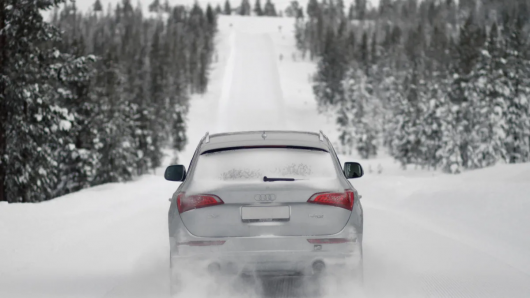
“Many people overestimate the capabilities of their cars, particularly owners of AWD vehicles. They think that by buying a four-wheel drive, acquired immunity from the laws of physics. But it is not, – says Valery Tsygankov, driving instructor and the founder of the school of counteremergency preparation of drivers. Very often opinionated drivers of AWD cars push on the gas pedal, all four wheels pull the car forward. At this moment, many there is a feeling of confidence in the car because, of course, in the snow, all-wheel drive car starts to accelerate faster and more confident”.
In fact, the beauty of all-wheel drive is really a comfort when moving from place straight, and when you have to stop on a steep slope. But when it comes to braking and cornering, the beauty benefits of all-wheel drive as the snow melts on the palm. The thing is that when braking and cornering all-wheel drive does not give any benefit. That is why at the first snow in early winter, the first in the ditch are SUVs and SUVs, because their owners have overestimated the capabilities of all-wheel drive.
Beware of all-season tires
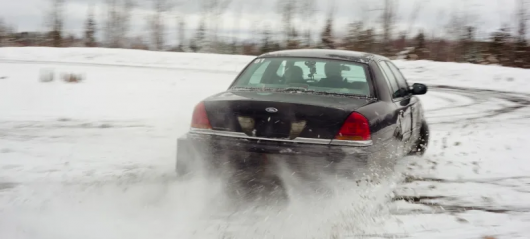
All season tires are a compromise, as a houseboat, according to Gennady Broslavskiy, Director of shop on sale of automobile tires. “Actually all season tires are not a good home, and it’s not a good boat,” he said.
For winter driving it would be better to buy winter tires, which is far superior to the best all-season tires, says Jennifer Stockburger, which regularly conducts tyre testing for the magazine Consumer Reports and is a Director of operation in your centre avtoispitania.
In his view, one of the advantages of winter tires front all season is a special tread design with extra sharp edges, so-called lamellae. In addition, winter tires have a special rubber compound that retains the softness of the rubber in the cold and therefore the tenacity when the temperature drops to large negative values.
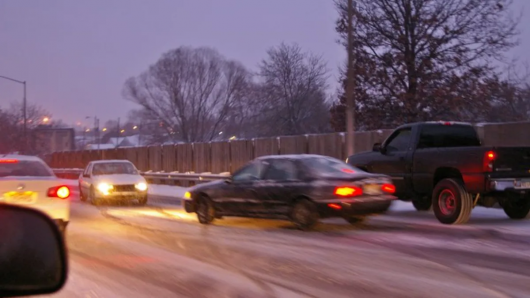
One of the disadvantages of winter tyres is that because of the softer rubber compound, their service life is lower compared to all-season tires, whose composition is much tougher. But on winter tires significantly reduces braking distance. Also on winter tires you will be more comfortable to control the car when cornering. Winter tires are more elegant, more supple, has an extra tread for a good grip. But, alas, the life of winter tires below. So what in the world is no free lunch.
Recall that in Russia in accordance with the regulations of the Customs Union, all vehicles must be operated only with winter tires. In December, January and February, driving on summer tires is prohibited. However, direct administrative responsibility for the driving on summer tires, the legislator has not foreseen. But this does not mean that all drivers must ignore the prohibition regulations of the Customs Union.
Remember that the use of winter tires in the winter – it’s not just your safety but also the safety of all road users.
To not be confused when buying tires winter tires with vsesezonka, pay attention to the marking on tires. Snow tires must be the so-called “Alpine” symbol – the icon with the mountain and snowflake on the sidewall indicating that the tires meet international standards for winter performance.
Electronic security is not a talisman
Most modern cars now have anti-lock brakes (ABS) and electronic stability control. Anti-lock brake system is designed for automated pumping of the brakes and helps the driver maintain control of the car while trying to stop on slippery surfaces. To put it simply, the ABS system prevents the wheels from locking when braking on slippery surfaces.

Electronic stability control uses sensors to determine the trajectory of the car. Sensors determine whether moving the front and rear of the machine in one direction and whether this direction of movement the position of the steering wheel. If not, the system automatically applies braking one or more wheels to try to align the trajectory of the car in the right direction.
The most common mistake of many drivers on the winter road is their confidence that the modern electronic assistance systems driving will help in an emergency. Many, in fact, constantly have come to rely on ABS and the stability control of the vehicle.
First, you should know that no electronics will never be able to change the laws of physics. Secondly, you have to rethink the principle of operation of these electronic assistants. You have to understand that once the electronics interferes with the operation of the vehicle, it means that you made a mistake. Yes, in some cases, such electronic babysitter can really save, correcting slight driver error. But there is a limit. So you should never rely on electronics. Best avoid errors during driving in winter.

According to Tsygankov, Valery, instructor and founder of the school of counteremergency preparation of drivers, the system ABS and stability control system the vehicle should be considered as sensors for driver assistance.
For example, if the driver feels that triggered anti-lock brakes or electronic stability, is a clear sign that you need to reduce your speed, as the car gets closer to the fact that the wheels will lose traction. By the way, these electronic assistance systems work best with winter tires, because for the efficient operation of electronic assistance systems need a good pull, which is achieved on a slippery road only with good winter tires.
What to do if something goes wrong
“When you start to lose control, you really need to look where you want to go, and not to look at any obstacle you may face”, says Tsygankov, Valery. The fact is that usually your hands purely by instinct will guide you in the direction you are looking. So in an emergency situation away from sin don’t look at the cars, fences and posts, where you can drive. It is better to see where the safest place to go. In this case, the chance to get out of extreme situations on the road will be higher.
